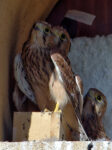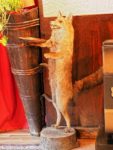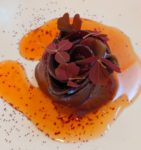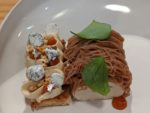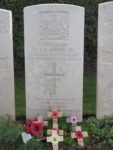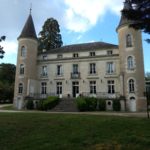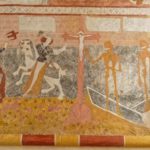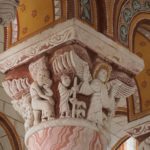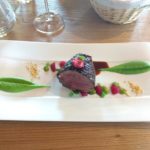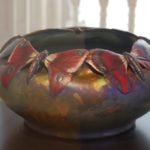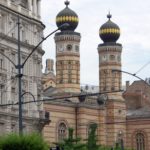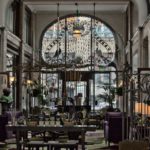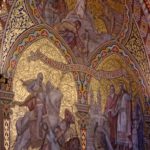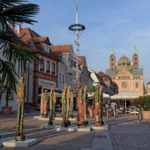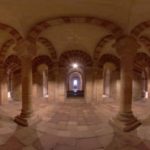To download a printable PDF version (no pictures)
click on this link E2E2021no3.pdf (four A4 pages)
There are links to photographs in the text;
some will lead to larger selections of photographs
including this link to
Our unexpected kestrel visitors
Like many of our retired friends, we decided to lie low in August while many families and younger people celebrated the long-awaited easing of restrictions by throwing away their masks and crowding to beauty spots, music festivals, protests and beaches. We were encouraged when the UK dropped the compulsory quarantine regulation for visitors from France in early August, but decided to wait and see if things had changed by September when pensioners like us traditionally tend to travel. Towards the end of August, with UK friends being offered postponed cruises (usually to somewhere other than the original destination), we decided that even if we would not cruise, we would at least cross the channel and spend plenty of time seeing family and friends at long last and also sort out the neglected Letchworth house.
 You will have gathered that in the meantime we have had a lot of enjoyment from watching the kestrels from eggs through hatching into fluffy chicks, fighting over food, gaining feathers, flexing their wings, and finally flying. It was hard not to endow them with human emotions and characteristics.
You will have gathered that in the meantime we have had a lot of enjoyment from watching the kestrels from eggs through hatching into fluffy chicks, fighting over food, gaining feathers, flexing their wings, and finally flying. It was hard not to endow them with human emotions and characteristics.
John fretted when he felt the parents were neglecting to return sufficiently often with food and Helen worried that her pre-breakfast gardening in the potager below their nest was disrupting their routines. It was possible to imagine the parents worrying that the grey and black (gardening clothes colours) creature might spot them returning to the nest, unaware that the grey and black thing already knew where their nest was.
One of the chicks seemed to grab most of the food when a parent delivered it and also to bully the other two – a bossy big brother? On August 12 the last one flew off. We had expected them to return to their ledge after their first flights, but they seemed to find more spacious perches in the trees.
One day, when we drove to Saint Dié after the surrounding fields had been cut and baled, we were surprised to see kestrels, buzzards and other raptors sitting on about one in ten of the bales between Entre-deux-Eaux and the crossroads. But a few days later there were none to be seen. They had probably caught every mouse and vole (and quite a few larger grasshoppers) that had rashly put in an appearance! We still see the kestrels flying from some of the local trees.
It was just as well that we had a distraction from kestrel-abandonment-syndrome the day after they had all flown off. We had booked lunch again at the Imprimerie. None of the other restaurants that we like seem to have changed their menu since we last went. As we drove into the book village, various stalls were setting up along the sides of the street. It was a weekend book fair which was due to start at 14.00, so we thought we’d look round after lunch, despite the hot temperatures. The laid-back waiter always has some minor grumble when we chat (on our previous visit he’d had three – firstly he had just had his first compulsory-for-restaurant-staff vaccination, secondly he was extra busy as the waitress was off following a car accident, and thirdly they would have to check each client’s pass sanitaire from the start of August to see that they had been doubly vaccinated, and he did not appreciate having to act as police when busy with their own jobs). However, by our August visit, the waitress was back, and she checked our pass sanitaire without any hassle and the waiter was enjoying talking to a lot of first-time customers and explaining how the eight-course surprise menu of small dishes works alongside a menu-of-the-day.
We were ushered to our usual table, and a succession of delicious dishes began to appear. Chef Morgan Fady always produces new dishes including, this time, a delicious amuse bouche of beetroot macaroons filled with foie gras and blackcurrant conserve. There was a refreshing salad of green and yellow dwarf beans with apricots, and some absolutely delicious beef with a parsley béarnaise sauce. The fish, like the beef was cooked over the wood fire, which added a special flavour. We added a new word, baudroie, to our vocabulary, which a rather overweight young man sitting with his parents at the table opposite ours instantly translated as monkfish; his fluency was a surprise in the small village – as we chatted he used other non-standard-textbook words like “bragging” – but he turned out to be a visiting Parisian. We were even brought unsolicited coffee at the end, just as we like it – the waiter must have been mortified that last time that they had no milk in the fridge.
As we expected, it was hot looking round the bookstalls after lunch, but more bookshops than usual were open, and being in the old stone-walled houses and barns, their interiors were lovely and cool. But, despite looking at a book of La Fontaine fables illustrated by Chagall and one on Gothic architecture in the Vosges, no books came home with us.
Helen had been reading a couple of books which brought back pleasant memories. One, Le Grand Meaulnes came from a small flea market. We’d come across the grave of its author Alain-Fournier quite by chance on the day we’d driven with friends to a hillside spot, in fact an American First World War memorial, which was a good place to experience the total eclipse of the sun; it felt weird, as the cows all lay down, the birds became silent and the skies darkened; afterwards, en route to Verdun we saw a sign pointing into the woods which mentioned Alain-Fournier, whose death or disappearance as a soldier in the First World War had remained a mystery until 1991 when an archaeological excavation uncovered a communal grave in which Alain-Fournier and eighteen of his men had been buried in September 1914. The quiet glade was a more poignant testimony to the Great War than the huge scale of Verdun. The other August read was a different angle on the Second World War, through the Ajax football team in Amsterdam under German occupation, the fate of its many Jewish supporters and the complicity of the Dutch. But that book also brought back happier memories of one of our last pre-Covid trips, which was to Amsterdam in May 2019, for the Rembrandt and Hockney/Van Gogh exhibitions (and a dramatic Ajax v Spurs match on TV).
We also returned to Senones last week, to lunch at the Bon Gîte. The restaurant and small hotel had changed hands around July 2019, with the great grand-daughter of the original founder taking over with her partner as chef. The food was traditional and rather uninteresting to our taste. Senones was once the capital of the old principality of Salm, and had an abbey with a famous library and the castle/palace of the Counts of Salm, both of which were sold to textile industries after the Revolution. Being close to the German border in Alsace, Senones was severely affected in both world wars by bombardments and mass deportations. When we first went there, a certain charm lingered round the old centre; but this time, as we strolled round after lunch, we were saddened by how depressed and derelict it was looking. On our way, we had admired the restoration of the abbey and grounds in the nearby small town of Moyenmoutier, which since the demolition of its ugly factory buildings was now revealed in its full extent and magnificence. So it was sad to still see in Senones the collapsed roof, scaffolding, boarded-up window openings and barred gateway of the west block of the old chateau, and the drab factory garment shop in part of the abbey. With most of the shops closed (possibly because of holidays), the old town looked as if it was decaying away.
The kestrel parents may have feared being harmed by the resident humans, but it was in fact one of the humans who got injured. A few days after they flew off, John went into the attic to adjust the camera that had been knocked as they flapped their wings. You may remember that he had had to block the window opening with something more substantial that the polystyrene that the birds had been pecking away. The something substantial was the heavy back of an old bookcase, and he dropped it on his foot. A lot of blood, dirt and antiseptic later, his foot swelled and darkened, and shoes were impossible with the large cut and bruising. To add insult to injury, he must later have twisted round as he applied Arnica gel to the bruising, and his back went.
On the medical front, we realised that summer was a good time to have a doctor’s appointment. Since the disastrous heatwave and deaths of 2003, adequate medical services have to be provided throughout summer. But in summer 2021 a lot of customers had rushed off elsewhere, and our doctor’s waiting room was empty when John had an appointment in late July, so he did not have the usual long wait. And when Helen had a routine appointment in the middle of August it was with a young locum who called her in on the dot of the appointed time and ushered her out after the allotted twenty minutes consultation. It was interesting that, when she nosily asked if he preferred working in small villages or larger towns, he immediately replied that he liked small villages as people only came when they really needed a doctor, rather than for trivial complaints. And they listened carefully and followed advice. He was off to Corcieux next. What does that say about townies?
Medical services seem to be responding more slowly in the UK. Leila’s doctor has signed her off work again as her long Covid has meant that she was too exhausted and brain-fogged when returning to work full-time. After waiting a month for a phone assessment with the long Covid clinic, she was referred to SALT (Speech and language therapy for brain fog & loosing words), pulmonary rehab, rehab/falls (presumably for exercises) and something that sounded like fatigue mosaic. She has also seen a cardiologist for an ECG, with an echocardiogram to follow. Meanwhile she has sensibly been swimming and walking. But not an easy time.
Toby and family meanwhile were able to postpone their holiday in the south of France after the UK imposed amber plus quarantine restrictions, and booked a week in some very pleasant looking Airbnb accommodation on the outskirts of Pitlochry. Jacob gave us a video phone tour of the house, and Toby sent photos of canoeing and hill hiking. Unfortunately Toby had an unpleasant return to Letchworth, as he had to go up to our house where the power had been off for over a week and the fridge-freezer contents smelt awful – the main offender being some defrosted chicken. He turned on the trip switch and most things came on again. But he still had to return a few days later to dispose of the now-refrozen food on the evening before bin collection.
And now, with the amber-plus status of France reduced to amber, we can look forward to seeing all of the family again after such a long time, not to mention sorting out the house and garden. We have booked our crossing and Covid tests for next week.
Enjoyable as it will be to see all our friends, it will probably be worth giving us a week or so to impose some order on the long-neglected house!


